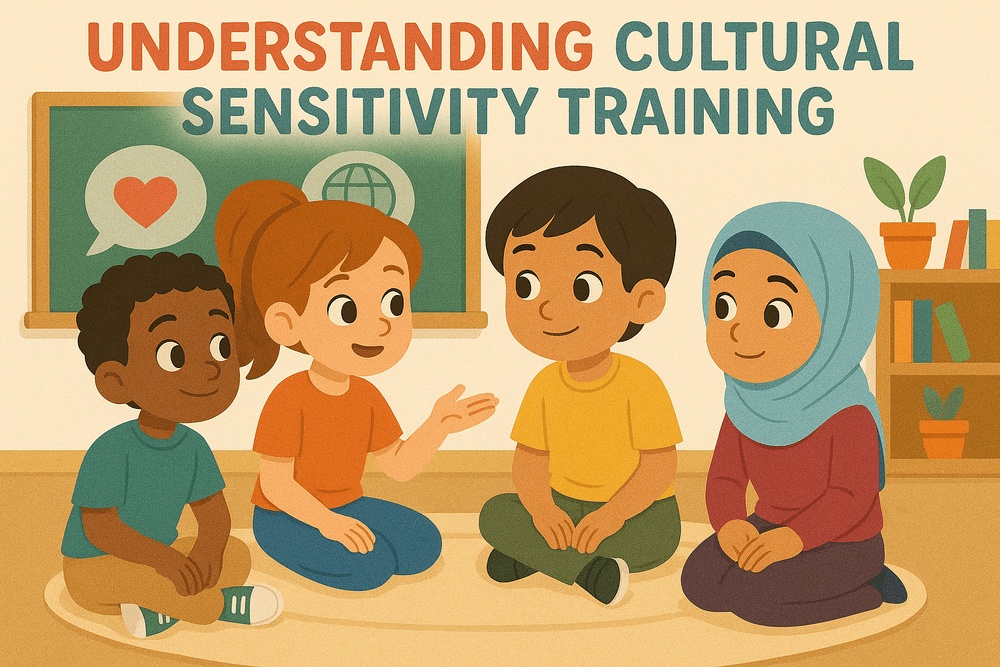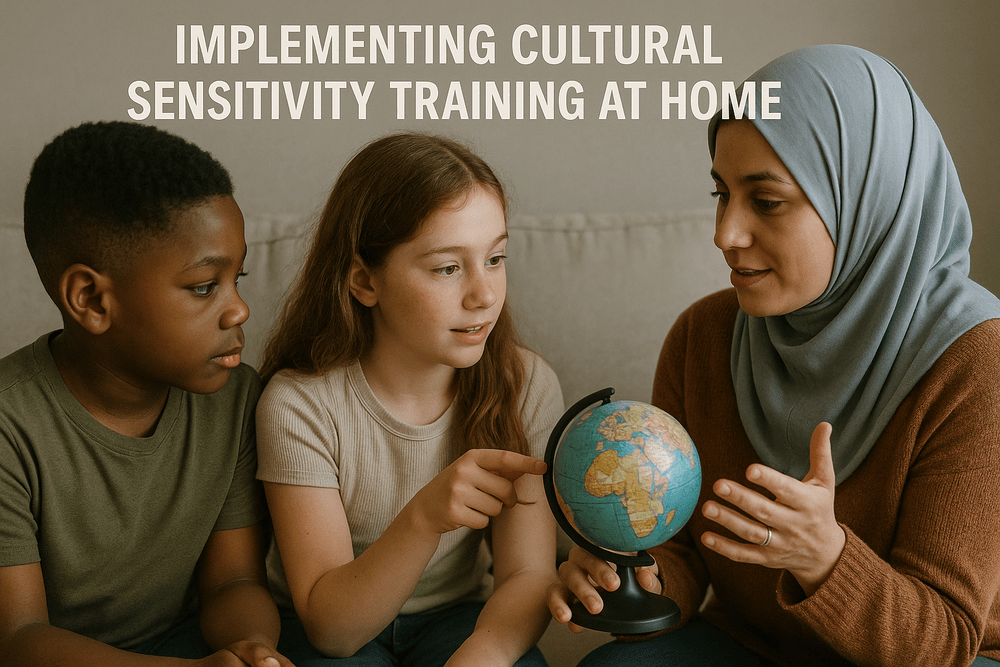In today’s interconnected world, the need for children who can quickly adapt to multicultural environments is more significant than ever. Cultural sensitivity training stands out as a major factor that makes parents seek to raise their offspring for an all-inclusive tomorrow. Far from a just passing educational trend, this training is one of the crucial steps in building empathetic, open-minded, and culturally sensitive generations.
In turn, Learning Tail will show that sensitivity to cultural differences is invaluable, fostering an understanding of cultural diversity, mitigating bias, and promoting the view of an inclusive world. Unravel as we unfold how our training programs can convert your child into a global citizen who will thrive in a vibrant and cross-cultural workforce. Embark on a journey into cultural sensitivity.
Understanding Cultural Sensitivity Training

In a world closer than ever, cultural sensitivity training isn’t just a fancy word but a bridge toward more understanding and collaboration among people from different walks of life. At its core, cultural sensitivity training fosters respect and empathy across various cultures in our increasingly diverse societies and workplaces.
At Learning Tail, we realize the incredible value this training brings to adults in the workforce and children growing up in our wonderfully varied world. Here is why it is essential:
- Development of Empathy: Cultural sensitivity training allows one to put oneself in others’ shoes, providing insight into their feelings and experiences. It breeds compassion and understanding of their experiences and worldviews.
- Bias Reduction: This training also helps in identifying and challenging one’s own biases, reducing prejudice, and allowing more inclusive participation.
- Communication Enhancement: Communication is at the core of any cross-cultural interaction. Training gives the person tools to handle cultural differences without misunderstandings.
Tail’s programs aim to make learning cultural awareness and appreciation of cultural diversity lifelong. This isn’t just reading from textbooks; this is practical experience in the journey to understand the kaleidoscope of cultural distinctions that make up our global community.
The following are some points which our cultural sensitivity training focuses on:
- Diversity training: It provides relevant knowledge to the learners about respecting and valuing the diversity of backgrounds and perspectives.
- Work diversity: Prepare a generation that enters the workforce knowing and appreciating the people surrounding them.
- Cultural Diversity: understand and appreciate the tapestry of cultures contributing to our everyday experience.
By participating in the sensitivity training offered by Learning Tail, you are offering your children a program and a life-changing experience that will help them be prepared for living in a world where cultural diversity prevails. Let us give your kids the gift of turning them into responsible, empathetic, and culturally adept citizens!
The Importance Of Cultural Sensitivity For Children

As the global village shrinks, even the youngest must learn how to handle cultural diversity tactfully and respectfully. Cultural sensitivity for children is not an option but a core ingredient in forming a sensitive, cohesive society. Here’s why and how:
- Improved Social Interactions: Cultural sensitivity enhances playground-level interactions with international engagements. Children who understand cultural differences can quickly adapt to social fabrics, connecting and building respectful and enduring relationships.
- Increased Empathy: When children learn about different cultural backgrounds, they are not just gathering facts; they are growing hearts. Deep-rooted empathy training prepares the young mind for competence in understanding and respecting feelings across different cultural backgrounds.
- Global Readiness: Our children are going to be global leaders. Early exposure to cultural diversity training will prepare them to embrace opportunities in a multi-cultural workforce, making this reflexive, not an afterthought.
- Prejudice reduction: When kids are trained for cultural competence, prejudice and stereotypes are eliminated. Teaching them in the various contexts of cultures minimizes the chances of ethnic disparities and prejudicial behaviors, making the playgrounds—and later workplaces—diverse and inclusive.
The heart of Learning Tail’s sensitivity training programs beats for a pledge to:
- Nurture cultural intelligence and proficiency that arms the kiddos with the readiness to shine in every team or community setting.
- Improve the level of cultural competency to handle situations of miscommunication and misunderstanding with grace. Further communication within an increasingly diverse population confirms that a barrier of language or different cultural and linguistic nuances acts like a bridge and not a block.
Finally, jumping deep into the ocean of cultural contexts does not prepare the children to be better students or leaders, but equips them to become better human beings. At Learning Tail, you ensure that your little ones go out into a world of diversity and will be capable of doing so with an open heart.
Implementing Cultural Sensitivity Training At Home

Transferring the main ideas of cultural sensitivity training to the family does not require grand gestures. Simple and regular activities can enhance cultural awareness and appreciation among children.
Here is how your home could be one place where cultural learning thrives:
Reading Books and Stories About Diversity: Give your child’s bedtime reading an extra boost by incorporating books that explore cultures other than their own and highlight diverse characters. These sensitivity trainings are, for sure, not only educational but a pass to other worlds right from the comfort of your couch.
- Attend cultural events and festivals: Find local or virtual cultural festivals that create a rich, sensory, artistic experience. These could be different in terms of traditions and customs. Events like these form one of the immersive forms of cultural sensitivity training that textbooks can never provide.
- Encouragement toward Language Learning: A new language is a window to another culture. Encourage your children to learn languages; this expands their understanding of different cultures and equips them to become more effective and inclusive in diverse workplaces.
- Discuss Current Events Globally: Include children in discussions of what is happening worldwide. This helps them understand the global implications of events and introduces them to the complexities and richness of cross-cultural dynamics.
- International cuisines: Learning to cook and explore cooking food in your kitchen will allow you to take culinary classes in different countries. Such hands-on learning makes learning about cultural diversity delicious and portrays the tangible benefits of embracing other cultures.
This will not only broaden their horizons but also get them ready to enter a very diverse and inclusive workforce. Embedding into other cultures through regular immersion via simple, everyday activities can bring profound cultural sensitivity and awareness. Let us make cultural competence part of our daily family routine for homes and, eventually, the workplace that genuinely thrives on understanding and celebrating differences.
Formal Training Opportunities
As our diverse population increases, developing cultural competence organizationally is crucial. Formal training opportunities are invaluable to parents who foresee a future where their children are professionally skilled and culturally sensitive. It is about turning the topic of cultural sensitivity into a lived experience—a skill set as valuable as any college degree. The following is how one can avail oneself of such resources:
Structured Workshops or Programs: Look for special cultural diversity training workshops that offer a structured program to study the sensitivities of different cultural backgrounds. These workshops are typically aimed at enhancing communication and creating a more culturally sensitive and accepting workplace.
Venues for Learning
Museums, community centers, and educational non-profits are hotspots for workplace sensitivity training and can be invaluable for children. These institutions often host cross-cultural training sessions and experiences to foster cultural competency across various cultures.
Advantages
Formal education equips children with cultural intelligence, an essential tool in avoiding miscommunication, prejudice, and misunderstanding because of cultural differences. It promotes cultural competency, which allows children to communicate better with people from other cultures.
Cultural sensitivity training is not a luxury but a necessity for nurturing competent, inclusive individuals. Such training programs promote a greater appreciation of cultural differences and the necessity of diversity and inclusion. Well-rounded education includes formal cultural competence training when reading to children for pragmatic day-to-day interactions.
Parents, heed: Begin at home, but don’t stop there. The impact of cultural sensitivity training is multiplied when paired with formal educational environments. It can make a real difference in workplace dynamics and relations in all aspects of life, from health care to collaboration between team members of different cultural identities. Give your kids this vital 21st-century credential—begin looking into formal training opportunities today.
